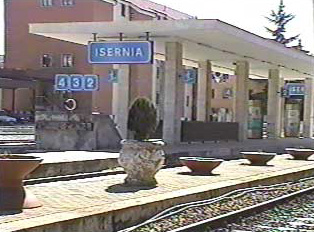LangMedia
Italian in Italy
Trains and Subways

An expansive rail system connects all of Italy and provides a relatively economical and efficient transport system. Various types and classes of trains abound -- some with sleeping compartments and dining cars, some first-class only with reservation required, some first and second class with reservation suggested, some extremely fast traversing Italy in a matter of hours and others slowly making stops at every small town along the route. Reading the train schedule often requires familiarity with the route, so it is advisable to consult a map before using a train schedule. In order to go, for example, from a metropolis in the south to a small town in the north (let's say Naples to Cremona), one needs to check trains between major cities (Naples - Milan) and then find the local train that runs to the destination from the closest major city (Milan - Cremona). Trains are generally safe, but one should always keep a close eye on belongings. Bringing food and beverages is a good idea since many trains do not offer food service. All classes of trains have bathrooms and have a choice of smoking and non-smoking cars. The price of the ticket depends on the class of train; boarding the train with the wrong ticket will result in the passenger's paying a supplement and perhaps a fine. In any event, the passenger must remember to validate the ticket using the machine on the platform before boarding the train. A non-validated ticket will also result in a fine.
Subways have been built in both Milan and Rome and are predominantly used for travel within the city and into the suburbs. Subways are fairly undeveloped in Italy, largely due to the difficulty of expanding through underground areas that contain ruins. One can purchase tickets for the subway only, sold at the tobacconist, newsstand, or dispensed from machines at the metro station, or one can opt for tickets that can be used for both the subway and the bus. The ticket is inserted into a slot at the turnstile when entering the subway platform. Subway stations are marked by a lit sign on the street with a large "M" (standing for Metro ). Schedules are available at tourist information centers, and on every subway station and train there is a map of the subway system posted on the wall. Subways run from very early in the morning until approximately 1:30 - 2:00 a.m. As much as they are relatively safe, it is not recommended that a young woman travel alone on a subway at night. All passengers should be aware of others standing too close since pickpockets (frequently children) search for unsuspecting victims on crowded trains.
Videos
-
"Buying a Train Ticket"Transcript document:
-
"Buying a Train Ticket 2"Transcript document:
-
"Buying a Ticket at the Tabacchi"Transcript document:
-
"Validating the Train Ticket"No transcript
-
"Validating the Train Ticket 2"Transcript document:
-
"Calling for Train Information"Transcript document:
-
"Boarding the Train"Transcript document:
